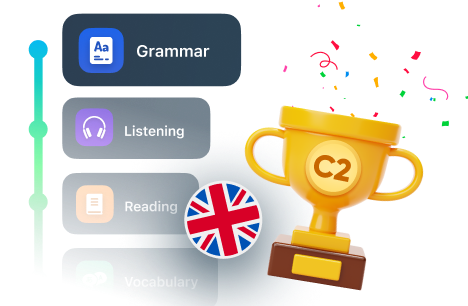
How to Help Your Kid Enhance Language Skills Beyond the Classroom?
By embracing cultural diversity, balancing multiple dialects, and encouraging a love for learning, you empower your child with the tools they need to communicate confidently in an interconnected world.
As we all know, strong language skills are like magic spells that open doors to better communication, learning, and personal growth.
While school does play a significant role in language development, there’s so much more you can do as a parent to support your kids on their linguistic journey. You have a significant role in helping your child improve language skills beyond the classroom.
Schools may provide a strong foundation, but your active involvement through engaging conversations, shared reading, and more can make a world of difference.
By embracing cultural diversity, balancing multiple dialects, and encouraging a love for learning, you empower your child with the tools they need to communicate confidently in an interconnected world.
Below, I’ve shared some exciting and proven strategies you can use to help your little one enhance language skills outside of school. Scroll on!
Learning a foreign language at school: pros and cons
When it comes to learning languages in the classroom, there are definite pros and cons you should consider.
On the positive side, professional instruction from qualified teachers provides a well-structured curriculum and exposure to diverse language resources. Classroom interaction does offer valuable practice.
However, the limited time for lessons and large class sizes can sometimes hinder individual attention and personalized learning. That’s where online learning and LiveXP 1-on-1 private lessons come in as great alternatives.
Complementing language learning at school
To bridge the gap between classroom hours and comprehensive language development, consider these strategies at home:
- Engaging conversations create a rich language environment, allowing your kids to express themselves freely.
- Reading together not only boosts their vocabulary but also strengthens their comprehension skills.
- Engaging in word games and activities like Scrabble and crosswords adds an element of fun to language learning.
- Encouraging storytelling and writing nurtures creativity while building proficiency.
- And yes, technology and language applications are great tools to leverage. Just remember to set screen time limits for your kids.
Cultivating cultural exposure
Introducing your kid to a new community and culture expands their horizons. You can explore diverse literature, music, and media from around the world.
This exposure is great as it enhances your child’s language skills and encourages an appreciation for global diversity.
Balancing multiple languages
For families embracing multilingualism, there are both pros and cons involved. The cognitive advantages of being multilingual are absolutely remarkable, but finding the right balance requires careful planning.
That said, strategies like picking a language for specific contexts and promoting consistent usage can help your child become a confident multilingual person.
Encouraging lifelong learning
Language learning is a lifelong journey. Even after school, it’s still helpful to keep improving language skills. Exploring linguistic courses, travel experiences, and engaging with native speakers can help you with this goal.
Moreover, learning at school comes with various advantages. It enhances cognitive skills and improves memory, among other things. Exposing yourself to different cultures encourages global awareness and empathy.
However, time constraints and limited individual attention are potential drawbacks. To improve your kids’ language skills online, platforms like LiveXP offer valuable resources you can take advantage of.
7 ways you can help your kid improve language skills at home
During a significant portion of the school day, your child actively participates in various language development exercises such as singing melodies, delving into storybooks, and identifying items within the classroom.
While these engagements effectively introduce children to language and facilitate the growth of their vocabulary, it’s worth noting that you have the opportunity to employ specific interactions at home. This helps your kid expand their vocabulary horizons and enhance language skills at home.
That said, here are five simple language activities or tips you can consider to help your kid improve language skills at home:
№1 Self-talk
Self-talk entails expressing our actions to our children using the present tense. For instance, you could say something like, “I’m pouring ingredients into the mixing bowl to bake a delicious cake.”
This informs them about the current activity and the purpose behind it. Such explanations help children understand the situation better, helping them know how to connect words with actions.
№2 Parallel talk
Parallel talk serves as an effective method for engaging in language exchange with your child while they’re immersed in play.
This approach involves narrating their ongoing activities, or in other words, verbalizing their actions as they happen. For instance, while your kid is busy contracting a magnificent block structure, you might say, “Look at that! The tall tower you’ve built with those colorful blocks is truly impressive.”
By actively embracing parallel talk, you facilitate the association of words with actions in your child’s learning journey, simultaneously recognizing and applauding their progress or achievements through the play.
№3 Talking about your child’s feelings and emotions
Talking about feelings and identifying emotions plays a crucial role in fostering robust social and emotional growth.
By pinpointing the emotions your child is going through, you enhance their emotional vocabulary. This aids them in comprehending their feelings and guides them in recognizing these emotions within themselves.
Let’s assume your little one is feeling frustrated because they couldn’t solve a puzzle, for example. You could say something more or less like;
“I can see that you’re getting a bit frustrated because the puzzle is challenging, Shawn. But that’s totally fine! How about we work on it together? We’ll figure out the tricky parts and celebrate when we beat the challenge. What do you say, son?”
This kind of interaction helps your kid become familiar with recognizing their emotions and knowing how to deal with them in a positive way.
№4 Sharing knowledge with your kid
Establishing a solid foundation for language learning involves sharing information with your kid. As you interact with them, consider adding three extra pieces of information to the conversation.
For instance, if your child brings up a picture of a zebra, you could say something like, “Look, it’s a wild animal with black and white stripes. We call them zebras. They are found in Africa and often travel together in groups called herds. These stripes make them unique, differentiating them from their sister, the donkey.”
By adopting this approach to exchanging insights with your child, you not only enhance their grasp of the world but also extend their learning experience.
№5 Verbal play
Playing around with words can be a really fun way to help your child learn language. When you read to your child, look closely at the pictures and tap them. Try making up funny rhymes or using words that sound similar when you’re doing things together.
You can also sing songs during playtime or when you’re changing activities to make words more interesting. Furthermore, using your fingers to play along with songs, or using felt boards to tell stories, or acting out stories from fun kids’ books are all cool ways to incorporate gestures and language.
These are different ways you can use wordplay and language learning throughout the day. Remember, teaching your child words early on is super important for reading and stuff later. And when you make it fun, it makes it easier for your kid to remember.
№6 Read bedtime storybooks in the new language
Getting storybooks in any language is really easy nowadays, especially through the internet. Another easy way is to trade books with other parents.
Kids don’t really question the language you’re reading to them. They are often just more interested in the bedtime story routine. If they were learning Spanish, for example, this is a great chance to add in some extra Spanish time in a way they will remember.
We all remember the books we loved when we were small. And sometimes, we still remember phrases from books we haven’t seen or read in a long time. Stories are awesome for understanding foreign languages, so be sure to make the most of them.
Moreover, reading illustrated storybooks to your child is a fantastic way to help them learn the language. Each page has pictures to help. And the words are simple and often repeated, just like in rhymes. This helps them learn new words and eventually start asking about the characters and what’s happening in the story.
№7 Get a language tutor that works with kids
1-on-1 lessons with a private tutor on LiveXP, for instance, provide personalized attention and tailored learning experiences. Plus, the platform has a way (or a filter) to choose a native-speaking tutor who specializes in working with children.
This is particularly beneficial, as tutors who work specifically with kids can immerse your child into the culture, helping them understand and appreciate the new dialect.
And speaking of private tutors and helping your child enhance language skills, why not consider enrolling in private language lessons along with your kid? It’s practically the best way to help and motivate them.
Help your kid enhance language skills by learning it yourself
To establish a constructive attitude towards the language your kid is learning, begin by setting an example yourself.
For instance, if your child is enrolled in an English class, consider enrolling in one, too. Besides, learning together not only offers quality time with your children but also cultivates a favorable mindset towards acquiring and conversing in a new language.
By immersing yourself in the language, you’ll be able to demonstrate to your children that it’s better to try even if they are making mistakes. It’s more commendable than waiting until they know how to speak or construct flawless sentences.
Let’s now explore (in brief) some ways or tips to learn a new language alongside your little one so you can help them enhance language skills outside of school.
Tap into immersion: dive into fluency & culture
Speaking a new language is, without a doubt, a gateway to new opportunities, expanded horizons, and deeper connections with different people.
Among the best and most effective methods of mastering a new tongue is language immersion. In a hot second below, we are going to explore the concept of language immersion, starting with its pros and cons.
Language immersion: pros and cons
Language immersion offers a host of benefits that traditional learning methods might not provide. Here, you are fully immersed in the target language, allowing you to absorb new vocabulary, sentence structures, and nuances at a faster pace.
This approach also helps improve pronunciation and fluency, as the people you surround yourself with speak the tongue fluently.
Additionally, language immersion fosters a thorough understanding of the community, allowing you to appreciate traditions, customs, and perspectives that are crucial to language skill development. Though it might be your least concern, it still helps to explore some benefits and drawbacks of language immersion.
The pros to consider
- Learning like a kid. Learning through immersion is like how we learn our mother tongue as kids. You’re surrounded by the language, and you naturally pick up words and phrases just by being there.
- Speaking and listening skills. By immersing yourself in the language, you get really good at speaking and understanding it. You hear different ways people talk and learn to speak just like them.
- Getting to know the culture. Immersion isn’t just about words—it’s about understanding a whole new culture. You see how people do things, what they like, and why they do things the way they do.
- Feeling confident. It also makes you more confident when speaking the language. You won’t be so scared to make mistakes. You learn from them instead. Your skills naturally improve, leading to heightened confidence in your ability to speak with ease.
- Learning faster. Want to learn quickly? Think of immersion classrooms like super-fast rides. Using the new dialect every day boosts your progression at a higher pace, which enables you to master the dialect much quicker.
The cons to watch out for
- Feeling lost. You may find an immersion classroom a little confusing at first. You may not understand everything others are saying, and that can be just as frustrating as it sounds.
- Not knowing all the words. While immersion helps you learn everyday words, you might miss out on more specific words that are important in certain situations.
- Grammar can also be tricky. Immersion doesn’t always teach you grammar rules. This, of course, can make understanding hard sentences a little harder.
- Learning from mistakes. Without someone to correct you, mistakes you make can eventually turn into bad habits that are hard to fix. This is actually one of the many reasons people opt for private, 1-on-1 language lessons.


















